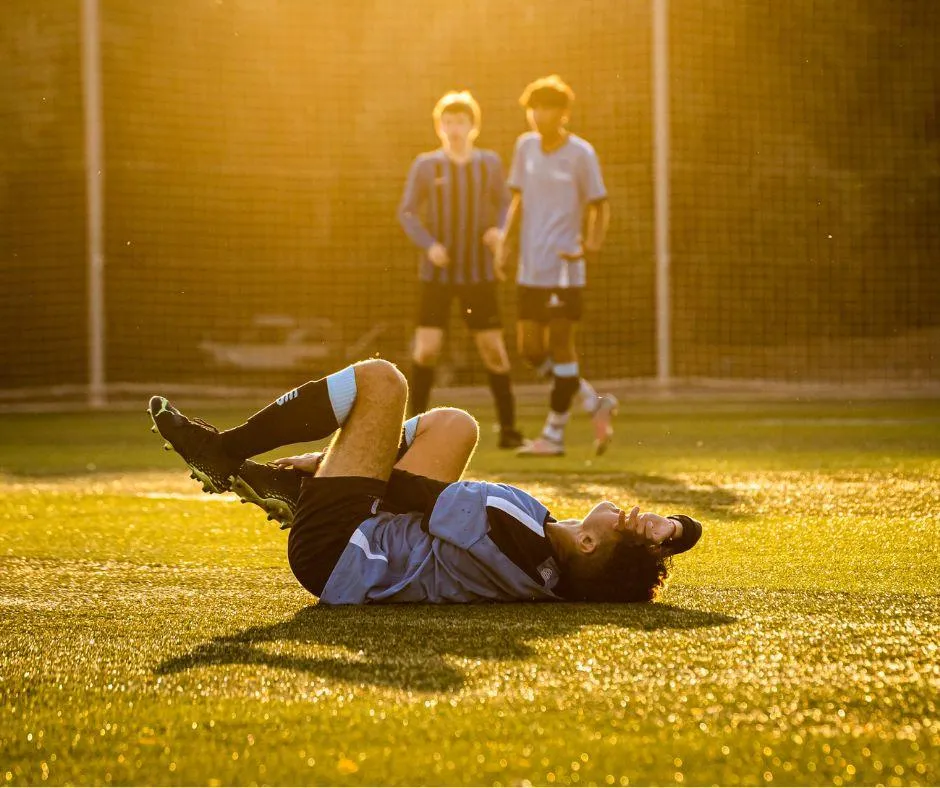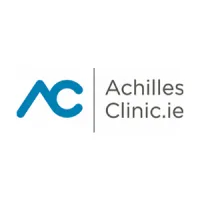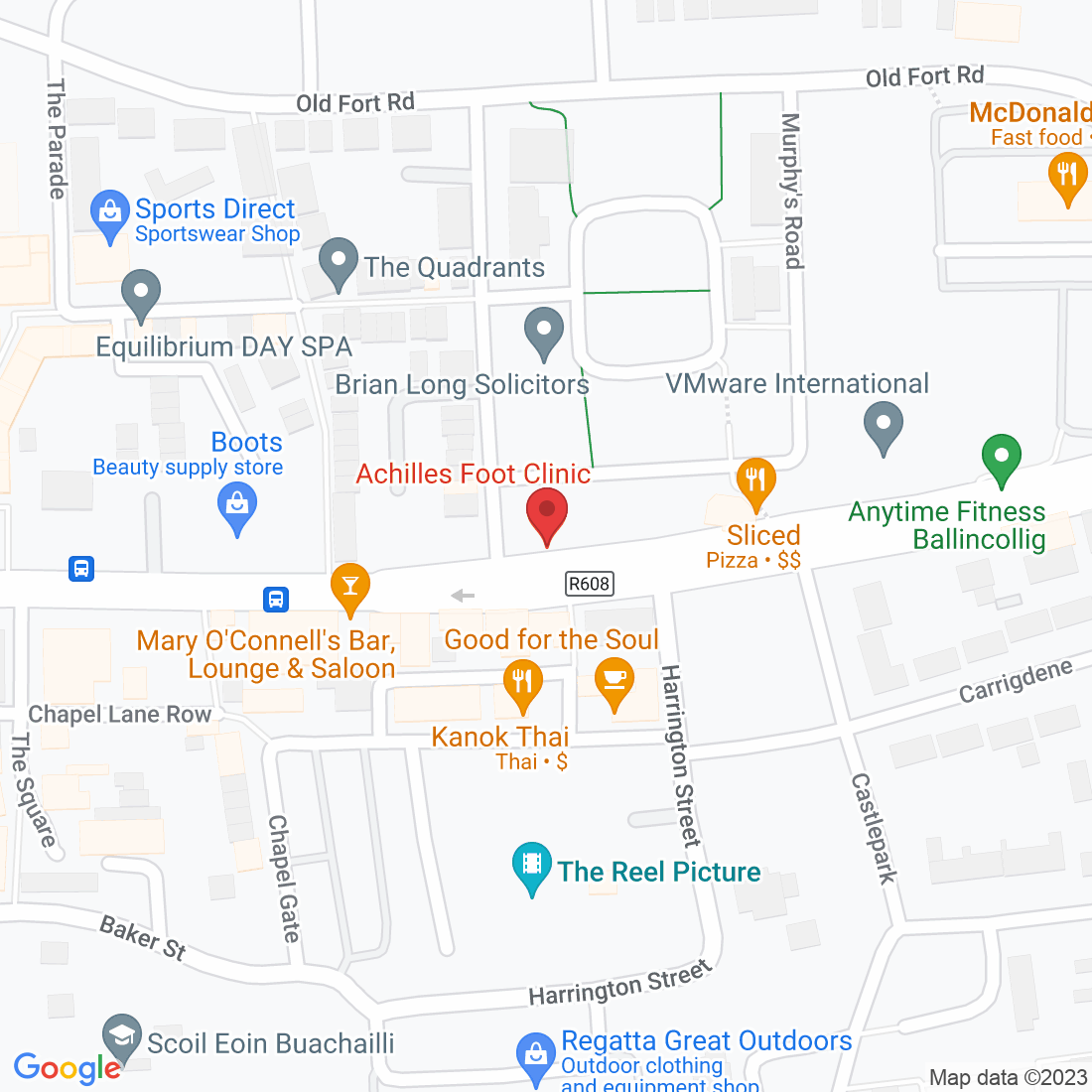
We have all been there, neglected a niggle in our foot and told ourselves that it would probably go away. Weeks have passed, even months, and it’s only getting worse. Then finally, when we are hobbling around barely able to walk, we decide to seek help…
Well, at Achilles Foot Clinic, we are here to help you.

Osgood Schlatters
Hey there, welcome to the Achilles Foot Clinic Cork blog!
Today, I want to share a story with you about a 16-year-old boy we recently saw at our clinic. This young athlete had been dealing with the effects of Osgood-Schlatter disease, and his journey got us thinking about how we can help others facing the same challenge.
Meet Jake: Battling Osgood-Schlatter at 16
Picture this: a spirited 16-year-old boy named Jake, full of energy and dreams, but with a bit of a hitch in his step. Jake was an avid soccer player, a real talent on the field. His speed and agility were remarkable, but he had one persistent roadblock – Osgood-Schlatter disease.
Osgood-Schlatter disease wasn't just a tongue-twister; it was a real pain in the knee for Jake. He'd been feeling discomfort and occasional sharp pain just below his knee for months. It wasn't your typical teenage growing pain; this was something more. Jake's parents grew concerned, and they turned to us at Achilles Foot Clinic Cork for help.
In this blog post, we're not only going to dive into what Osgood-Schlatter disease is but also share Jake's story and explore how we helped him get back on the field. So, if you or someone you know is dealing with Osgood-Schlatter, Jake's journey might shed some light on what you can do to overcome it. Let's get started!
What is Osgood-Schlatters?
Osgood-Schlatter disease, also known as Osgood-Schlatter syndrome, is a musculoskeletal condition that primarily affects adolescents during their growth spurts. It is characterized by pain and inflammation just below the knee, specifically at the tibial tuberosity, which is the bump on the upper part of the shinbone (tibia). This condition typically occurs during the period of rapid growth in adolescence, between the ages of 10 to 15, but can sometimes persist into adulthood if left untreated.
Causes of Osgood-Schlatters
The exact cause of Osgood-Schlatter disease is not completely understood, but it is generally associated with overuse or repetitive stress on the patellar tendon that connects the kneecap (patella) to the shinbone. This excessive stress can result from activities that involve running, jumping, or rapid changes in direction, such as sports like soccer, basketball, or gymnastics.
During adolescence, the bones are still growing and maturing. The growth plate at the tibial tuberosity is where the shinbone lengthens, and it is particularly vulnerable to stress-related injuries. Repetitive pulling on the patellar tendon can lead to small tears in this area, causing pain, inflammation, and sometimes even a visible lump or bump. Factors like poor biomechanics, muscle imbalances, and inadequate warm-up or stretching routines can contribute to the development of Osgood-Schlatter disease.
Potential Treatments for Osgood-Schlatters
While Osgood-Schlatter disease can be uncomfortable and painful, it is usually a self-limiting condition, meaning it tends to improve on its own once the adolescent's growth slows down and the bones mature. However, several treatments and strategies can help manage the symptoms and promote a faster recovery:
Rest: Reducing or avoiding activities that aggravate the condition is crucial. This allows the body to heal naturally.
Ice: Applying ice to the affected area can help reduce pain and inflammation. Cold therapy can be especially beneficial after physical activities.
Physical Therapy: A podiatrist can develop a tailored exercise program to strengthen the muscles around the knee and improve flexibility.
Bracing: In some cases, wearing a knee brace or strap may help alleviate symptoms by providing additional support to the patellar tendon.
Anti-inflammatory Medications: Nonsteroidal anti-inflammatory drugs (NSAIDs) may be recommended to reduce pain and swelling.
Injections: In rare cases, a healthcare professional may consider corticosteroid injections to manage severe pain and inflammation.
Surgery: Surgery is a last resort and is only considered if conservative treatments are unsuccessful and the condition persists into adulthood.
How the Podiatrists at Achilles Foot Clinic Cork Can Help with Osgood-Schlatters
At Achilles Foot Clinic Cork, our dedicated team of podiatrists specialises in diagnosing and treating a wide range of foot and lower limb conditions, including Osgood-Schlatter disease. Here's how we can assist you or your child in managing this condition:
Accurate Diagnosis: Our experienced podiatrists will conduct a thorough examination to confirm the diagnosis and assess the severity of Osgood-Schlatter disease.
Personalised Treatment Plans: Based on the individual needs of each patient, we will develop a personalised treatment plan that may include a combination of rest, physical therapy, and other conservative treatments.
Custom Orthotics: If necessary, we can provide custom-made orthotic devices to help support the feet and reduce stress on the patellar tendon.
Education and Prevention: We will educate patients and their families on proper warm-up routines, stretching exercises, and techniques to prevent future occurrences of Osgood-Schlatter disease.
Follow-Up Care: Our team will closely monitor the progress of the condition and adjust the treatment plan as needed to ensure a full and speedy recovery.
Osgood-Schlatter disease is a common condition that can cause discomfort for adolescents, but with proper care and guidance from podiatry professionals, it can be effectively managed. If you have any questions or concerns about Osgood-Schlatter disease or any other foot or lower limb condition, please don't hesitate to contact Achilles Foot Clinic Cork. Your comfort and well-being are our top priorities.
If you or your child is experiencing symptoms of Osgood-Schlatter disease, don't hesitate to reach out to the knowledgeable and compassionate podiatrists at Achilles Foot Clinic Cork.
Call Now On 0212021001
Or
Fill Out The Form Below And One Of The Achilles Foot Clinic Team Will Call You
We are here to provide expert care and support during the journey to a pain-free, active lifestyle.
Ask Lorcan And His Team
Fill in the form to request a Call From Our Team
Fill in the form to request a Call From Our Team
One of our team will call you for FREE and answer any questions or concerns you may have about Bunions.
One of our team will call you for FREE and answer any questions or concerns you may have about your uncomfortable Bunions.








